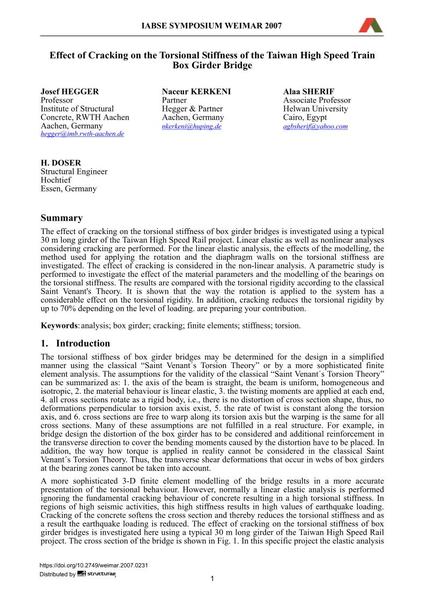Effect of Cracking on the Torsional Stiffness of the Taiwan High Speed train Box Girder Bridge

|
|
|||||||||||
Détails bibliographiques
| Auteur(s): |
Josef Hegger
Naceur Kerkeni Alaa Sherif H. Doser |
||||
|---|---|---|---|---|---|
| Médium: | papier de conférence | ||||
| Langue(s): | anglais | ||||
| Conférence: | IABSE Symposium: Improving Infrastructure Worldwide, Weimar, Germany, 19-21 September 2007 | ||||
| Publié dans: | IABSE Symposium Weimar 2007 | ||||
|
|||||
| Page(s): | 554-555 | ||||
| Nombre total de pages (du PDF): | 8 | ||||
| Année: | 2007 | ||||
| DOI: | 10.2749/weimar.2007.0231 | ||||
| Abstrait: |
The effect of cracking on the torsional stiffness of box girder bridges is investigated using a typical 30 m long girder of the Taiwan High Speed Rail project. Linear elastic as well as nonlinear analyses considering cracking are performed. For the linear elastic analysis, the effects of the modelling, the method used for applying the rotation and the diaphragm walls on the torsional stiffness are investigated. The effect of cracking is considered in the non-linear analysis. A parametric study is performed to investigate the effect of the material parameters and the modelling of the bearings on the torsional stiffness. The results are compared with the torsional rigidity according to the classical Saint Venant's Theory. It is shown that the way the rotation is applied to the system has a considerable effect on the torsional rigidity. In addition, cracking reduces the torsional rigidity by up to 70% depending on the level of loading. are preparing your contribution. |
||||
| Mots-clé: |
caisson
|
||||
